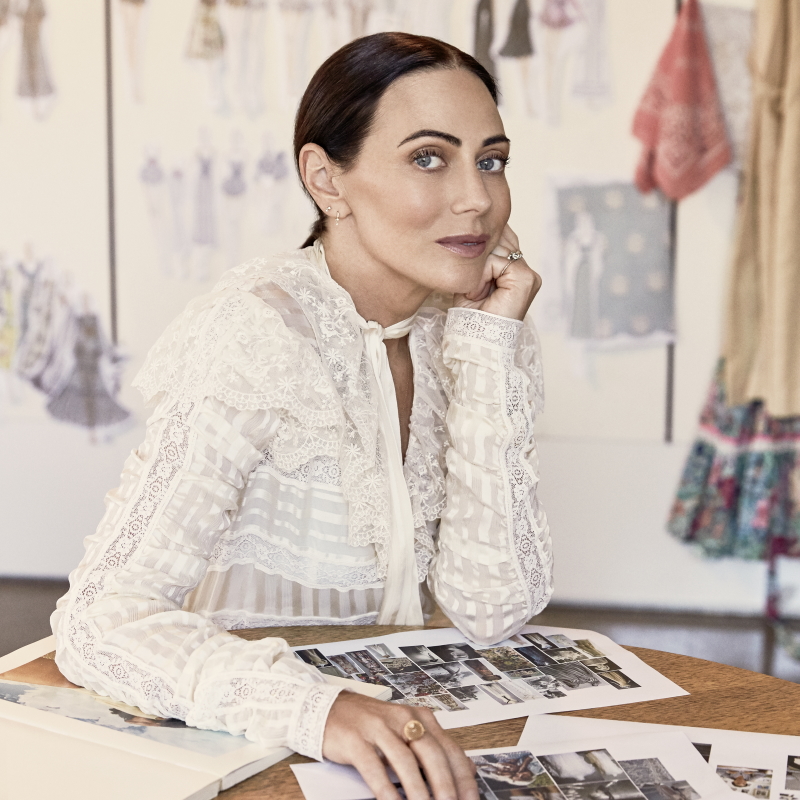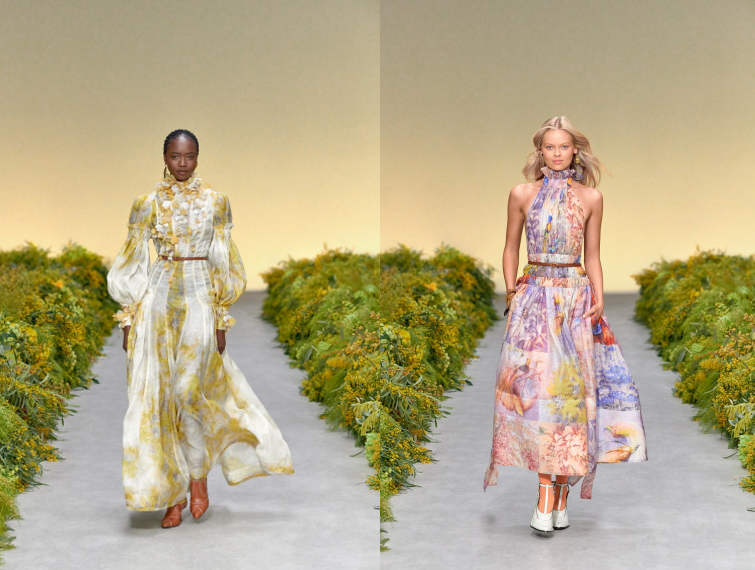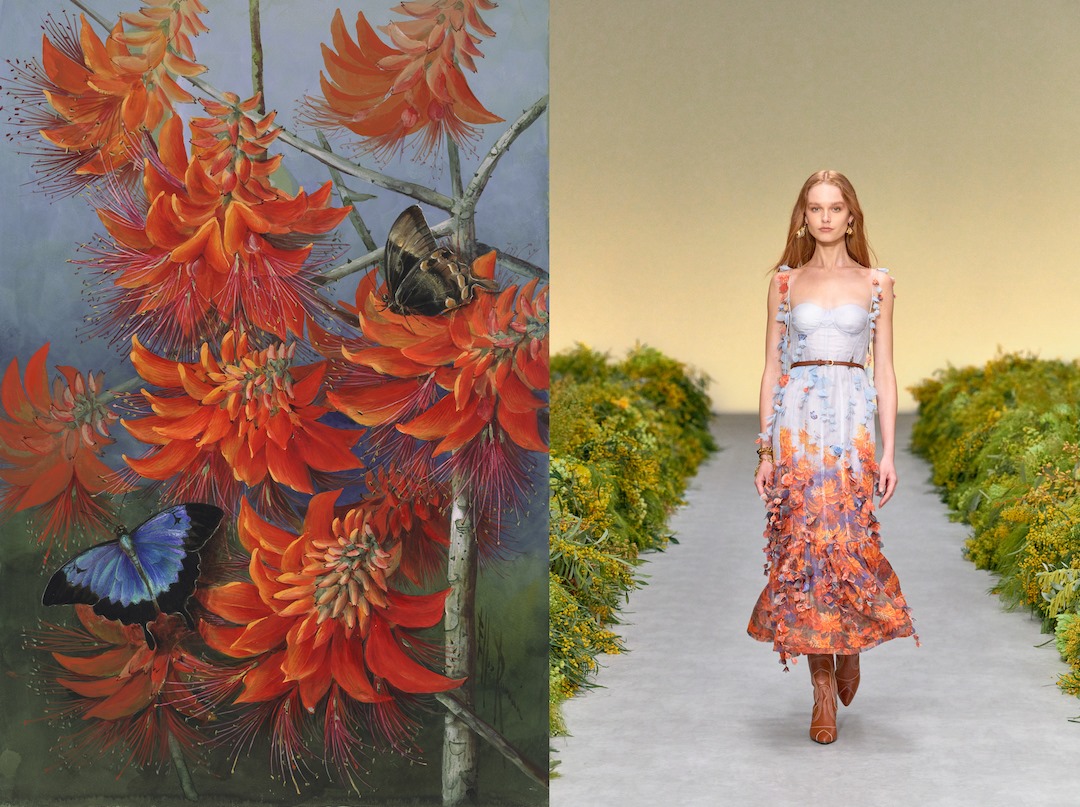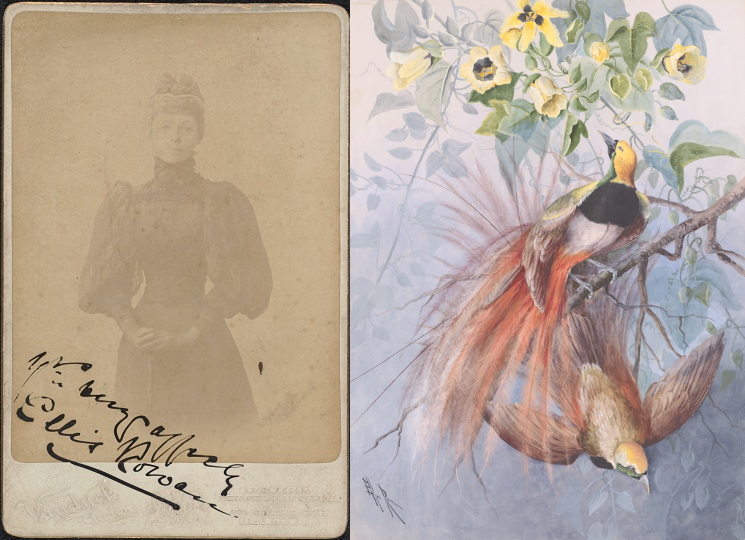In this exclusive interview with the National Library, Nicky Zimmermann discusses how she drew creative inspiration from the Library’s Ellis Rowan collection for Zimmermann's Spring 21collection, Wild Botanica.

Nicky Zimmermann
How did you come across the work of Australian artist Ellis Rowan? What initially attracted you to Rowan’s flora and fauna paintings and what was it that struck you about her work?
I came across a book called The Flower Hunter dedicated to works of Ellis Rowan. Her artwork instantly resonated with me – it was emotive and very Australian. I recognised the plants and birds, the colours were vibrant, and I loved how she let the light show through her paintings. I had always been drawn to botanical art and for a few seasons I’ve wanted to work it into our prints but struggled with the more traditional, scientific aesthetic and what we could do with it. Rowan’s artwork is different – she painted with such a feminine hand and I thought her artwork would be amazing to apply to clothing.
Can you describe the design process from when you saw Rowan’s art to selecting the works you thought would translate into your collection?
Our ready-to-wear (RTW) collections are created under the one theme so once the idea was formulated to use Rowan’s artworks, we had to figure out if they could be applied to the many elements that create an entire collection. It had to be feminine, have a sense of fun and draw an emotional connection for the woman who wears it – all from the one idea!

Two looks from Wild Botanica.
You used 10 of Rowan’s artworks as statement prints, how hard was it to decide which ones to use? Were certain prints chosen over others for their ability to be made three dimensional or have accompanying three dimensional elements included?
I loved them all, each for different reasons. Firstly, we had to apply the prints to different fabrications to see if they’d work and that became a factor in the ones we were able to use. One of the ideas that was important to us this season was that the fabrication was transparent and that the prints would let light shine through to achieve a beautiful glow and so you’d see all the different levels of colour in the print. We pulled different elements from nature as seen in Rowan's paintings, into the collection. You’ll notice butterfly embellishments and cotton crochet drawing on textures from the bush. Dragonflies adorn agate charm bracelets and accessories, and flowers are sewn in strings that fly off the garments like a flower would move in the wind.

Erythrina insularis F.M. Baily, family Fabaceae and butterflies, Papua New Guinea, nla.cat-vn1168540, alongside a look from Zimmermann's 2021 Spring Collection, Wild Botanica.
Were any of these designs or elements from the pieces in your collection inspired by the clothing that was worn, and that Ellis Rowan would have worn, during the late 19th and early 20th centuries?
Not intentionally – we were looking to create modern silhouettes but as is often the case some are details from these eras. The skirts are voluminous, and a lot of the hems have crinoline sewn into them which is an old lingerie technique used in under skirts. It gives the clothes a beautiful buoyancy – they swish and dance behind the woman as she moves in them. Bra corsetry is fitted within the dresses and teddy slips have been styled as outwear.
Ellis Rowan was considered quite the fashionista of her time. What do you think she would have thought about how you’ve showcased her paintings?
We hope she would have been proud. For us it was a tribute to the land and nature that Ellis Rowan loved so much and our home as Australians.

Left: Vandyck Studios, Portrait of Ellis Rowan, 1890s, Papers of Maie Casey, nla.cat-vn2997181; Right: Ellis Rowan, most likely Raggiana Birds of Paradise (Paradisaea raggiana) from Papua New Guinea, c.1917, nla.cat-vn2687189, featured in looks from Wild Botanica.
In January’s Vogue, an article highlighted young designers 'weaving narratives' into clothes. What is your interpretation of storytelling within fashion?
Our narrative is always tied to the sense of fun and enjoyment clothing can give – that is what is important to me in designing. The specifics of that storytelling change each season and is always important. The design team and I are always striving to create pieces that our clients will fall in love with and make them feel uplifted – we feel that is at the heart of why we design the things we do.
As a way of giving back, you donated to the National Library to assist with the digitisation of more of Ellis Rowan’s papers and personal journals, enabling everyone to have access to more of the National Library’s Rowan collection. How important is it for people to have access to such historic material?
Creating a digital archive gives people access to extraordinary material at the press of a button regardless of their location, economic status, or ownership. For me it is an exciting shift in how we experience art and allows these artworks to live on for generations to come.
You’ve said previously if you weren’t a designer, you would be a florist – was that why Rowan’s artwork appealed to you?
Definitely. To me flowers can make you feel happy in the same way fashion does. It was the way Rowan painted them so accurately and with a colorful feminine hand that gave her work instant appeal.
More on Ellis Rowan
- See a selection of looks from Zimmermann's Wild Botanica at the National Library
- Learn more about the inspiration behind, and artworks that inspired, Wild Botanica
- Uncover the life of Ellis Rowan
- Explore the Library's current exhibition, Birds of Paradise: Ellis Rowan in New Guinea
- Explore the Rowan Collection